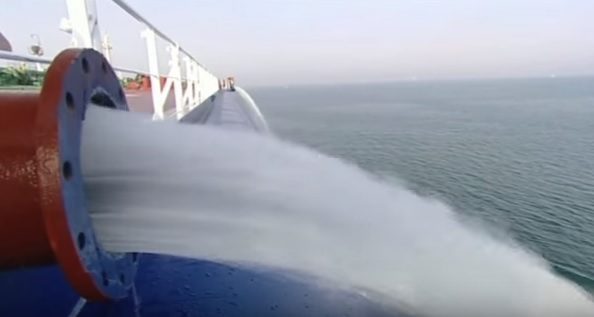Jad Mouawad, Mouawad Consulting AS, says that the shipping industry must become a leader in green technology by voluntarily working on reducing its environmental footprint. However he says, this is a far reaching scenario taking into account that 2017 is expected to be a continuation of the regulatory trend of 2016.
Shipping is arguably the most environmentally friendly means of transport given the volume of cargo transported vs the energy use. However, the shipping industry must become a leader in green technology by voluntarily working on reducing its environmental footprint.
Throughout the last four decades, regulators at national and international levels have been forcing the shipping industry to change its trend of increasing environmental footprint on the marine environment, by introducing regulations and limitations on discharges from ships to air and sea. Those regulations were driven by major accidents causing large pollutions or long-term goals like Climate Change.
2016 was not an exception. We have seen two major events unfolding: ratification of the Ballast Water Management Convention (BWM Convention) by enough states to allow it to enter into force 8 September 2017, as well as introduction of sulphur cap of 0.5% in 2020.
Looking more closely at the BWM Convention, we have seen, in addition to its entry into force criteria being met, the revision of the Guidelines for Type Approval of Ballast Water Management Systems (BWMS), the issuance by the US Coast Guard of their first Type Approval Certificate for a BWMS as well as the acceptance, by the IMO, of the concept of sampling ballast water after commissioning of a BWMS as well as the adoption of the idea of experience gathering period extending from 2017 and into some years so that regulators learn how BWMS installed are working.
Despite the fast development in the regulatory landscape, the ship owning industry is experiencing very challenging economical times which will reflect on a very difficult implementation of the BWM Convention. We will most probably see ship owners either scrapping ships or delaying to the maximum extent the decision to invest in a BWMS to meet the D-2 standard of the BWM Convention.
Given the fact that all ships, regardless of flag or age, must have an approved BWM Plan onboard, a BWM Record Book and an International BWM Certificate by 8 September 2017 to be able to trade; we will see a temporary peak in the number of ships without necessary papers in place, not allowed to discharge cargo or being detained.
At Mouawad Consulting AS, we will be focusing in 2017 on continuous development of our retrofit package for BWM Systems, increasing our capacity especially in Asia with surveyors who can perform commissioning of BWM Systems on behalf of ship owners. We will therefore be recruiting young and enthusiastic marine engineers and naval architects for those exciting services throughout 2017.
We are also planning to launch a new service targeting ship owners, allowing them to effortlessly gain access to a huge database of information we have on BWM Systems, regulations, know how’s and contacts; making the task of choosing appropriate BWM Systems and performing ballast water management onboard their ships easier and especially accessible to smaller ship owners that do not have dedicated technical personnel.
Overall, I see 2017 being a continuation of the regulatory trend of 2016. Unfortunately, we have today no signs showing that the shipping industry is willing to take a lead in becoming a leader and driver in reducing its environmental footprint.
I am a strong believer in the private sector and its ability, combined with a genius human mind, to curb the environmental footprint; and part of it is the shipping sector. The ultimate goal for the shipping industry must be to create a self-drive towards curbing the industry´s footprint on the environment. This self-drive will halt the exponentially increasing number of environmental regulations that are planned for shipping in the next 10 years.
Class societies, especially DNV GL, has shown leadership in showing that there are technical solutions to achieve more environmentally friendly shipping. The ball now is in the hands of the ship owners and most importantly the larger charterers like oil majors. A combination of both stake holders can create incentives and economical advantages to use more environmentally friendly solutions, be it on the design of ships or the equipment that can help ships reduce their environmental footprint.
I believe a private sector driven (as opposed to regulatory driven) development of environmentally friendly solutions, supported partly by governmental incentives, is the only way our industry can take a pole position in showing other industries and society at large, that we take our environmental obligations seriously.
Given the increasing trend in environmental awareness, being a leader in that domain will ensure that younger generations will continue to seek opportunities in our industry and develop it further.
The views presented hereabove are only those of the author and not necessarily those of GREEN4SEA and are for information sharing and discussion purposes only.

































































